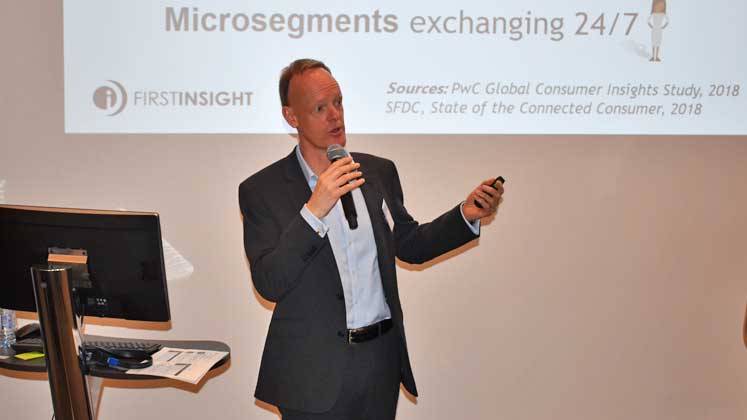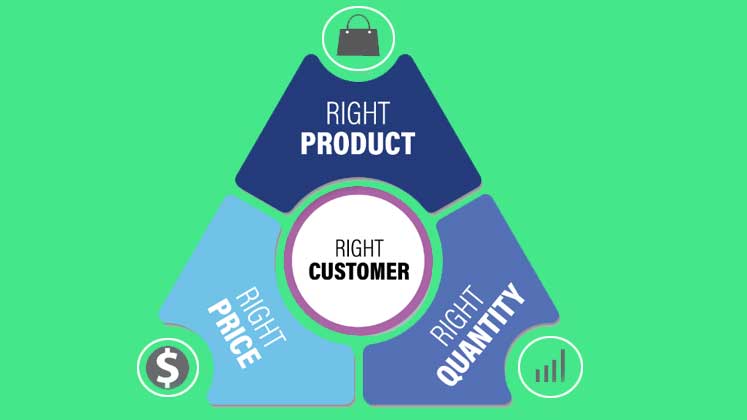It’s always easier said than done! This fits true in case of fashion retail industry as well because introducing new apparel products carries massive risk, and chances of their failure increase if a retailer does not study the market properly or read the minds of customers. However, the major question that a retailer asks is – How to read consumer’s mind? And the answer is – Switch to ‘customer-centric merchandising’. Now the issue remains in the fact that there are a number of companies that claim to provide such technologies to retailers, but only a few of them are proven and tested by leading apparel retailers. This article talks about how First Insight, Inc., a US-based technology company, is challenging the traditional retail.

First Insight, Inc., which transforms how leading retailers make product investment and pricing decisions, is increasing predictive capabilities, forecasting precise price, targeting customer segmentation data and recommending accurate buy quantity on new products through its ‘customer-centric merchandising’ platform. Peter Jeavons, Managing Director (Europe), First Insight, Inc. told Apparel Resources that fashion retail industry doesn’t need new technology, instead mature technologies, which are already available in the market but need to be adopted. “Digital product creation, advanced analytics and insights, smart connected supply chain and foundational product technology are some areas where retailers should focus to pace up with the changing trend. Our customer-centric merchandising platform is one-stop solution to improve these areas,” said Peter.
First Insight strongly believes a ‘winning decision’ can only be driven by analytics rather than instinct or experience alone. There are certain challenges that the fashion retailers are facing such as excessive markdowns, setting entry price points, store testing, fluctuating product success rate, low forecast accuracy and deteriorating design decisions which, collectively, can erode profit margins and hamper brand’s image to a great extent. Customer-centric merchandising platform provided by First Insight applies machine learning and predictive analytics to provide retailers with the relevant information and some strongest recommendations on the products they are bringing to market. “This is an era of ‘Design-Sell-Make’ concept, so apparel brands and manufacturers need to give up ‘Design-Make-Sell’ strategy if they want to cater to hyper-connected consumers,” suggested Peter.
How Customer-Centric Merchandising Platform Works
Attribute-driven Product Design
The platform allows attribute tagging and analysis, letting designers understand which design elements will resonate most with consumers. Designers can also view aggregate reports to see how attributes are trending over time, both in their own assortments and in comparison to the rest of the industry.
Machine Learning-driven Product Selection
InsightSelection application leverages the collective wisdom of millions of data points from consumer data, product test data and product performance data. Using machine learning, First Insight’s algorithms are trained on these data along with new information being collected every day. This is resulting in increased predictive capability, enabling merchants to make more accurate product selection decisions.
AI-driven Pricing: First Insight’s InsightPricing application is the only solution to leverage Bayesian modelling applied to real-time pricing data from customers, along with historical benchmark data. The result is a highly accurate pre-season price elasticity curve for each product, along with accurate forecasts of average unit retail prices before the product is launched. With these data, retailers can understand expected sell-through at full price, and plan for expected demand as a product is marked down.
Buy Quantity: For the first time, retailers and brands can not only make selection and pricing decisions with confidence, but they can also place buy orders at the proper depth based on predictive modelling. First Insight’s InsightPlanning application leverages historical data combined with real-time consumer data and advanced analytics to deliver buy quantity recommendations that allow merchants and planners to accurately weight buys, reducing stock outs and over-stocks.
Integration and APIs: First Insight offers APIs for integration with technologies including systems for PLM, 3D CAD, Assortment Planning, Pricing and Markdown Optimisation, and CRM/Campaign Management. This results in a seamless process for retailers and brands to incorporate First Insight’s consumer-driven product data into the entire ecosystem of solutions.
This is How First Insight is Transforming Retail Industry
Case Study 1
Situation: One of the early adopters of First Insight is a fast fashion retailer which witnessed negative comparable store sales and the traditional in-store testing methods failed to improve product development timeline for the retailer.
Critical Issue: The retailer introduced the latest designs and trends to the market that too faster than its competition. And, when the economy fluctuated, consumers obviously had to focus more on values and, thereby, restricted their spending on apparels. This way the retailer started losing its market share. It then became essential for the brand to find a way to maintain its ‘fast fashion’ product development calendar, while incorporating more consumer insight data into their decision, making it to better resonate with current and lapsed customers.
Reasons: The brand opted for traditional in-store testing methods which took too long to get the results and did not fit into the brand’s nimble product development cycle. Merchants and designers were left to make large investments with minimal direct-from-consumer data. This inability to align product development with consumer demand left the fast fashion retailer with sub-optimal sales and excess inventory.
Vision: To mitigate risk in buying decisions and improve the speed at which they are able to test new products, allowing them to increase top line sales more profitably.
Result: After a few pilots, the retailer was so excited about the information it was receiving that it immediately wanted to institute regular insights into its process. First Insight enabled this retailer to incorporate an efficient testing process into their ‘fast fashion’ product development cycle on a monthly basis. They now schedule photo studio time to take pictures of all new products for First Insight to test.
Leveraging the speed of First Insight’s platform allows the retailers to test 90 per cent of its new product assortment every month. They run 7-10 Insights for each assortment-planning schedule. Results are delivered to them within 72 hours, providing actionable guidance well in advance of key buying decision dates. The retailer is back on the road to becoming the industry innovator they were once known for by customers.
Rising Number of Millennials Will Push Forward the Need for ‘Customer-Centric Merchandising’
USA and China are two of the biggest apparel retail markets in the world with approximately US $ 350 billion and US $ 335 billion market sizes, respectively. A major contribution to this market is owned by Millennials. China has a whopping number of Millennials which revolves around 415 million (which is around 90 per cent of the entire European population), while USA has some 8 million Millennials within the country. Chinese and American Millennials’ spending on apparels products is a powerful driver of the market and should be understood by the retailers. “This generation actually comprises extremely smart and tech savvy shoppers,” commented Peter.
Not just China and USA, India is also growing in its apparel retail industry with a rapid speed. Indian fashion retail values at US $ 48 billion in 2019 and it is predicted to reach US $ 115 billion by 2026. Notwithstanding the traditional approach, young generation in India wants more individualised garments for them and, therefore, they do not refrain themselves from spending on fashion products. In India, Millennials are 34 per cent (approximately 440 million) of the country’s total population and they spend around 21.4 per cent of their monthly income on apparel and accessories which will further increase in coming years.
These staggering numbers indicate, sooner or later, the need for ‘customer-centric merchandising’ will spread its footprints on the global level. “We recently expanded in India in collaboration with Bata, a renowned footwear brand. We are studying the Indian apparel retail market and will surely come up with some plans for apparel industry as well,” asserted Peter.







